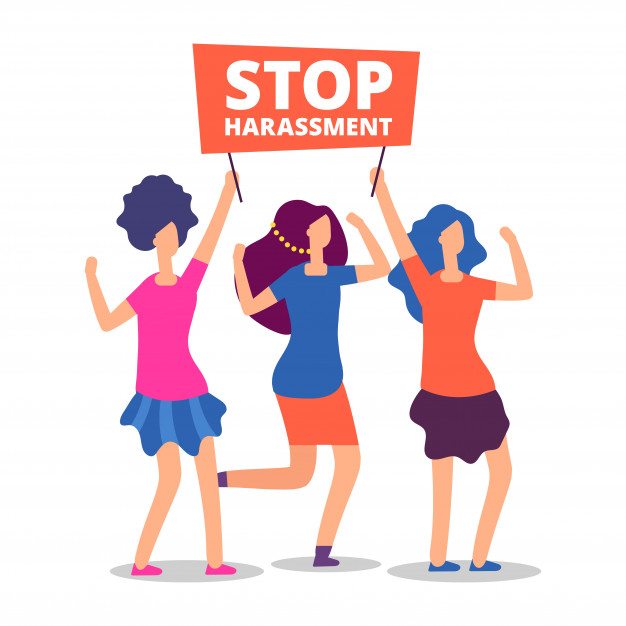UNDERSTANDING SEXUAL HARASSMENT IN THE WORKPLACE.
Sexual Harassment Fairwork Act
A person who sexually harasses someone else is primarily responsible for their behaviour. Don't suffer alone. Call us now.
Our Hotline is Open 7 Days a Week
All calls are 100% confidential.
What is Sexual Harassment Under The Fair Work Act?
“Sexual Harassment” has the same meaning as in s.28A of the Sex Discrimination Act 1984 (Cth). Section 28A(1) provides that a person sexually harasses another person if they make an unwelcome sexual advance, or an unwelcome request for sexual favours, to the person harassed; or they engage in other unwelcome conduct of a sexual nature in relation to the person harassed; in circumstances in which a reasonable person, having regard to all the circumstances, would have anticipated the possibility that the person harassed would be offended, humiliated or intimidated.
This means the conduct may not be directed towards you specifically, but if you find the conduct to be offensive or intimidating, it may still constitute sexual harassment under federal and state legislation.
‘Conduct of a sexual nature’ in s.28A of the Sex Discrimination Act 1984 (Cth) has been interpreted broadly. It includes making a statement of a sexual nature to a person, or in the presence of a person, whether the statement is made orally or in writing.


Forms of Sexual Harassment
Sexual harassment can take various forms. It can involve:
- unwelcome touching, hugging or kissing;
- staring or leering;
- suggestive comments or jokes;
- sexually explicit pictures, screen savers or posters;
- unwanted invitations to go out on dates or requests for sex;
- intrusive questions about an employee’s private life or body;
- unnecessary familiarity;
- insults or taunts based on your sex;
- sexually explicit emails or SMS messages;
- accessing sexually explicit internet sites;
- behaviour which would also be an offence under the criminal law, such as physical assault, indecent exposure, sexual assault, stalking or obscene communications.
What Is The Process For Dealing With Sexual Harassment At The Fair Work Commission?
The role of the Fair Work Commission, and the orders it can make are preventative – not remedial, punitive or compensatory. This means that Commission orders are intended to prevent the risk of further harm, not to punish or to provide financial compensation.
Firstly, an application is lodged with the Fair Work Commission through an updated Form F72 – Application for an order to stop bullying or sexual harassment (or both).
When lodging your application, the Fair Work Commission will ask questions regarding your employment or engagement and what happened, in regards to what sexual harassment conduct you allege has occurred.
Once the application is lodged, the Fair Work Commission will serve the application on the employer and named person(s), seeking a response from all involved parties. The matter is then assigned to conciliation, before a Fair Work Commission conciliator, or it is assigned to a Member of the Fair Work Commission. If it is assigned to a member, that member can then elect whether they hold a conciliation conference or a hearing.
In either case, if a conciliation conference is conducted and the matter is not resolved and the employee wishes to proceed to a hearing, the Fair Work Commission Member will then set the matter down for a hearing, in which the application will be determined. Upon determination, the Fair Work Commission Member will decide whether an order is made or declined. In either event, if the employee is not satisfied with the outcome, due to there being an appealable error, the employee can appeal by leave of the Full Bench.
Applications to the Commission for orders to stop sexual harassment can be made from 11 November 2021 but, workplace sexual harassment which occurred before 11 November 2021 can be considered by the Commission when making an order to stop sexual harassment under s.789FF of the Fair Work Act 2009 (Cth).
However, the Commission can only make an order if it is satisfied that there is a risk that the worker will continue to be sexually harassed by the relevant individual or individuals, so that there is a risk of future harm. In this way, the jurisdiction of the Commission addresses future conduct rather than penalising past conduct.
Who Can Apply For An Order To Stop Sexual Harassment?
A person can apply for orders to stop sexual harassment if they are a worker (as defined in the Work Health and Safety Act 2011 (Cth)), the worker is not a member of the Defence Force and they experience sexual harassment while at work in a constitutionally-covered business. An application can also be made if there is a risk that the bullying or sexual harassment (or both) will happen again and an employee want the Fair Work Commission to make an order to stop it from happening.
A worker includes an employee, a contractor or subcontractor, an employee of a contractor or subcontractor, an employee of a labour hire company who has been assigned to work in the person’s business or undertaking, an outworker, an apprentice or trainee, a student gaining work experience, a volunteer (except a person volunteering with a wholly ‘volunteer association’ with no employees, whether incorporated or not).
For a worker to be covered by the Fair Work Commission’s jurisdiction to stop the sexual harassment, the alleged sexual harassment behaviour must have occur while the worker is ‘at work’.
The phrase ‘at work’ is not defined in the respect at work legislation. When considering whether a person is ‘at work’, the focal point of the inquiry is the worker (the applicant). The individuals engaging in the unreasonable behaviour do not need to be workers – for example, they could be customers of a business. There is no requirement that these individuals must also be ‘at work’ at the time they engage in the alleged bullying behaviour. The term ‘at work’ can encompass a range of circumstances.
The Commission has considered the meaning of ‘at work’ in several decisions concerning applications to stop bullying at work. In these cases, the Commission has found that being ‘at work’ is not limited to a physical workplace or the times at which a worker is performing work. It may include the performance of work at any time or location,[2] as well as when the worker is engaged in some other activity which is authorised or permitted by their employer. The Commission has found that a worker can be at work even though they are not working (for example, because they are on an authorised meal break or at a work event or on a coffee break).
Furthermore, an applicant does not need to show that sexual harassment poses a risk to their health and safety when obtaining an order to stop sexual harassment. Sexual harassment is a known safety risk. This is different to the Commission’s power to make orders to stop bullying, where an applicant must demonstrate that there is a risk to health and safety as a result of the bullying behaviour.



